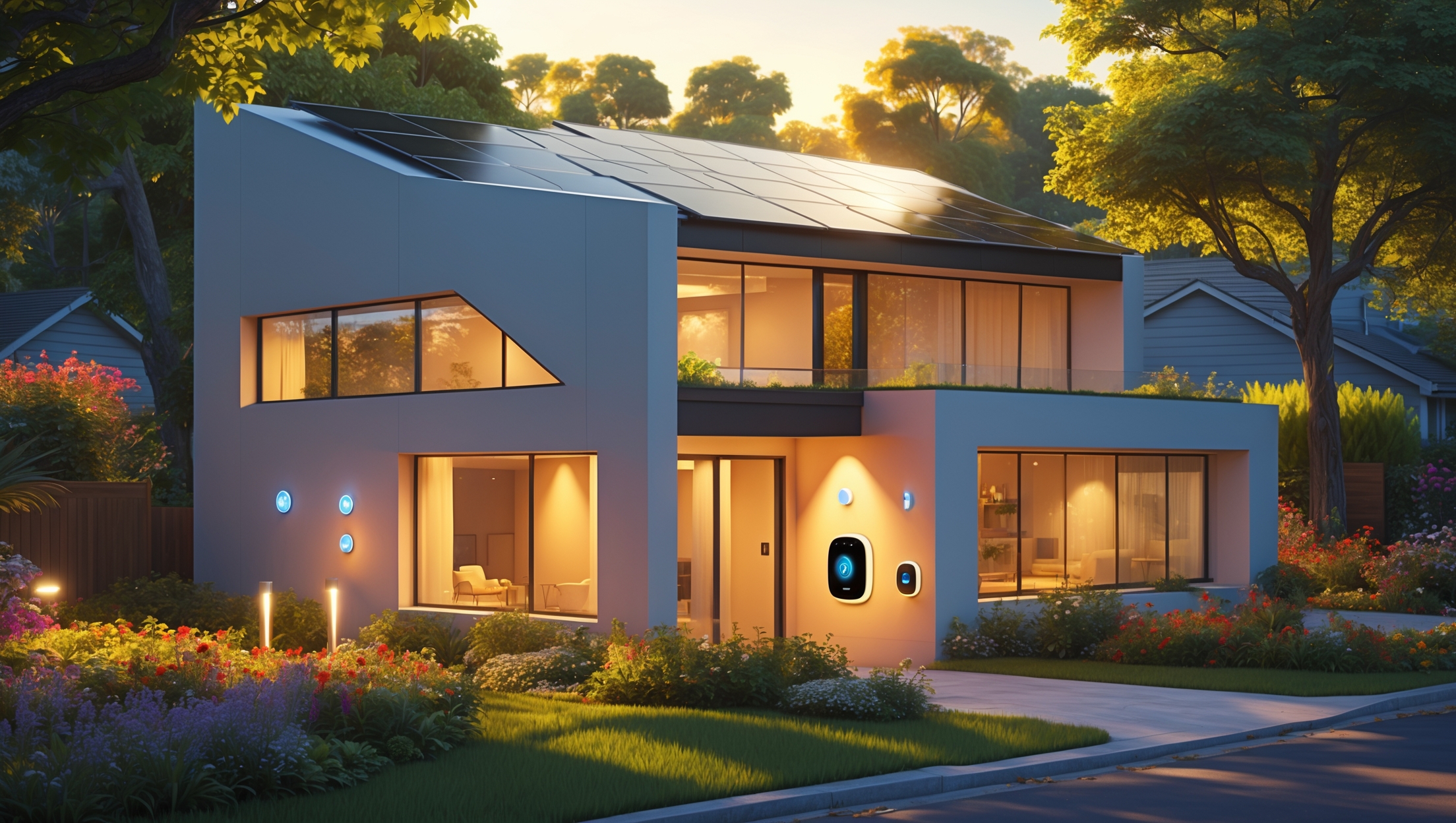Introduction: Why Energy Efficiency Matters in Home Improvement
Energy efficiency isn’t just a buzzword—it’s a vital principle that can transform your home into a more comfortable, eco-friendly, and cost-effective haven. Whether you’re a seasoned homeowner or just starting your home improvement journey, focusing on energy efficiency brings tangible rewards. From slashing your utility bills to increasing your property’s resale value, the impact is both immediate and long-lasting. But energy-efficient upgrades are often misunderstood or underestimated, with many homeowners unsure where to begin or which improvements yield the best results. In this comprehensive guide, we’ll cut through the confusion and provide you with actionable, expert advice on the most effective energy-efficient home improvements. We’ll detail how each solution works, what to consider before diving in, and how to maximize every dollar you invest. Ready to make your home better for your wallet, the planet, and your peace of mind? Let’s get started!
Understanding Energy Efficiency: The Basics
Before diving into specific upgrades, it’s important to grasp what energy efficiency truly means for your home. Simply put, energy efficiency is about using less energy to achieve the same—or better—results. This can range from reducing heat loss in winter to improving cooling in summer, or simply running your household appliances smarter. The key is to minimize waste without sacrificing comfort or functionality.
- Reduced Utility Bills: Efficient homes use less electricity and gas, translating directly to savings.
- Increased Comfort: Improvements like insulation and modern windows keep indoor temperatures steady.
- Environmental Benefits: Lower energy consumption means fewer greenhouse gases and a lighter carbon footprint.
- Boosted Home Value: Today’s buyers are willing to pay more for homes with green upgrades.
Let’s break down the most impactful energy-efficient improvements you can make, why they matter, and how to prioritize them based on your home’s unique needs.
Section 1: Insulation — The Foundation of an Efficient Home
Why Insulation Matters
Insulation is often overlooked, but it’s the cornerstone of energy efficiency. Proper insulation keeps warm air inside during winter and blocks heat in the summer, reducing your dependence on heating and cooling systems.
Types of Insulation
- Fiberglass Batts: Common, affordable, and effective for walls, attics, and floors.
- Spray Foam: Expands to fill gaps, offering superior air sealing but at a higher cost.
- Blown-In Cellulose: Ideal for retrofitting older homes; made from recycled materials.
- Rigid Foam Boards: Great for basements and exterior walls.
Where to Insulate
- Attic: The primary source of heat loss in most homes. Ensure insulation is at least 12–15 inches thick.
- Walls: Uninsulated or poorly insulated walls are a major energy waster, especially in older homes.
- Basement and Crawl Spaces: Prevent cold air from seeping in; use moisture-resistant options.
- Floors Above Unheated Spaces: Such as garages or porches.
Tips for Maximum Impact
- Seal air leaks before adding insulation for best results.
- Use higher R-value materials in extreme climates.
- Check for government rebates or incentives for insulation upgrades.
Section 2: Windows and Doors — Keeping the Elements Out
Window Upgrades
Old, single-pane windows are notorious for energy loss. Modern solutions offer significant improvements:
- Double or Triple Glazing: Multiple panes with insulating gas (argon or krypton) between them.
- Low-E Coatings: Microscopic layers that reflect infrared energy, keeping heat in during winter and out during summer.
- Window Frames: Vinyl, fiberglass, or wood-clad frames provide better insulation than aluminum.
Door Improvements
- Weatherstripping: Inexpensive and effective for sealing gaps.
- Insulated Exterior Doors: Solid core or foam-filled doors block drafts and heat transfer.
- Storm Doors: Add an extra layer of protection.
Practical Steps
- Check for drafts using a candle test; seal any gaps you find.
- Consider window inserts as a cost-effective alternative to full replacement.
- Install door sweeps for added insulation.
Section 3: Heating, Ventilation, and Air Conditioning (HVAC) Efficiency
Modernizing Your HVAC System
Your heating and cooling system is often the biggest energy consumer in your home. Upgrading to a more efficient system can yield dramatic savings.
- High-Efficiency Furnaces: Look for ENERGY STAR ratings and AFUE (Annual Fuel Utilization Efficiency) above 90%.
- Heat Pumps: Both air-source and ground-source (geothermal) heat pumps provide heating and cooling with remarkable efficiency.
- Smart Thermostats: Allow precise control and scheduling, learning your preferences to optimize comfort and savings.
Ductwork and Airflow
- Seal and insulate ducts to prevent up to 30% energy loss.
- Ensure vents are unobstructed for proper airflow.
- Consider a zoning system for larger homes, so you only heat or cool occupied areas.
Maintenance Tips
- Replace filters every 1–3 months.
- Schedule annual professional inspections.
- Clean vents and registers regularly.
Section 4: Lighting — Switching to Smarter, Greener Options
LEDs: The Gold Standard
Lighting accounts for about 10% of a typical home’s energy use. Swapping out traditional incandescent bulbs for LED alternatives is one of the simplest, most cost-effective upgrades you can make.
- LEDs use up to 90% less energy and last 25 times longer than incandescents.
- Available in a range of color temperatures for ambiance and task lighting.
Smart Lighting Controls
- Occupancy Sensors: Automatically turn lights on or off based on room activity.
- Dimmers: Fine-tune brightness to fit your needs and save energy.
- Smart Bulbs: Connect to your phone or home assistant for scheduling and remote control.
Natural Lighting Strategies
- Install skylights or solar tubes in dark areas.
- Use light-colored wall paint to reflect more sunlight.
- Arrange furniture to maximize daylight exposure.
Section 5: Appliances and Water Heating — Modern Solutions for Everyday Efficiency
Appliance Upgrades
- ENERGY STAR Appliances: Refrigerators, dishwashers, washers, and dryers certified for high efficiency.
- Induction Cooktops: Use electromagnetic energy for faster, more efficient cooking.
- High-Efficiency Laundry: Front-load washers use less water and energy than top-load models.
Water Heating Innovations
- Tankless Water Heaters: Heat water only when needed, eliminating standby losses.
- Heat Pump Water Heaters: Use ambient air to warm water, consuming up to 60% less energy.
- Solar Water Heating: A larger investment, but ideal for sunny climates and long-term savings.
Usage Tips
- Set your water heater to 120°F (49°C) for safety and energy savings.
- Insulate hot water pipes to reduce heat loss.
- Run full loads in dishwashers and laundry machines whenever possible.
Section 6: Smart Home Technology — Taking Efficiency to the Next Level
Smart Thermostats
Devices like the Nest, Ecobee, or Honeywell Lyric learn your routines and adjust heating/cooling for optimal energy use. Many utilities offer rebates for installation.
Home Energy Monitors
Track real-time energy usage down to individual appliances, helping you identify hidden energy hogs and adjust habits accordingly.
Automated Window Treatments
Motorized shades can be programmed to block sunlight during peak hours in summer or let it in during winter, reducing HVAC strain.
Connected Plugs and Switches
Control lighting and appliances remotely, create schedules, and eliminate phantom loads from devices left on standby.
Section 7: Renewable Energy Options — Going Beyond Efficiency
Solar Power
- Rooftop Solar Panels: Generate clean electricity and potentially eliminate your electric bill.
- Community Solar: Buy into shared solar projects if rooftop installation isn’t feasible.
Wind and Micro-Hydro
While less common for urban homes, small-scale wind turbines or hydro systems can be viable in rural or off-grid settings.
Financial Considerations
- Check for federal, state, and local incentives or tax credits.
- Calculate payback periods and consider financing options like solar leases or power purchase agreements (PPAs).
Section 8: Prioritizing Your Projects — Making a Plan
Conducting an Energy Audit
Before investing in upgrades, schedule a professional home energy audit. Experts use tools like blower doors and infrared cameras to identify leaks, insulation gaps, and inefficient appliances. Many utility companies offer audits at reduced rates or even for free.
Creating an Improvement Roadmap
- Start with low-cost, high-impact changes (like LED bulbs and weatherstripping).
- Address insulation and air sealing next, as these have the broadest impact.
- Upgrade HVAC and major appliances as budget allows.
- Incorporate smart technology and renewable options for long-term benefits.
Budgeting and Financing
- Explore home improvement loans or energy-efficiency financing.
- Investigate local grant programs and rebates.
- Consider improvements that can be bundled with other remodeling projects for cost savings.
Conclusion: Transforming Your Home, One Step at a Time
Making your home more energy-efficient is a smart investment in your wallet, your comfort, and your future. While the range of options might seem overwhelming at first, the key is to start with a clear plan and tackle improvements in manageable stages. Focus on sealing and insulating your home’s shell, upgrade critical systems like HVAC and appliances, and layer in smart technologies as your budget allows. Not only will you enjoy lower utility bills and a more comfortable living space, but you’ll also contribute to a healthier planet and potentially boost your property’s resale value. Remember, every home is unique—what works best for one may not be ideal for another. Don’t hesitate to consult with energy auditors or licensed contractors for guidance tailored to your situation. By making informed choices and taking consistent action, you’ll transform your home into a model of efficiency, comfort, and sustainability. Start today, and watch your energy savings—and satisfaction—grow year after year.

